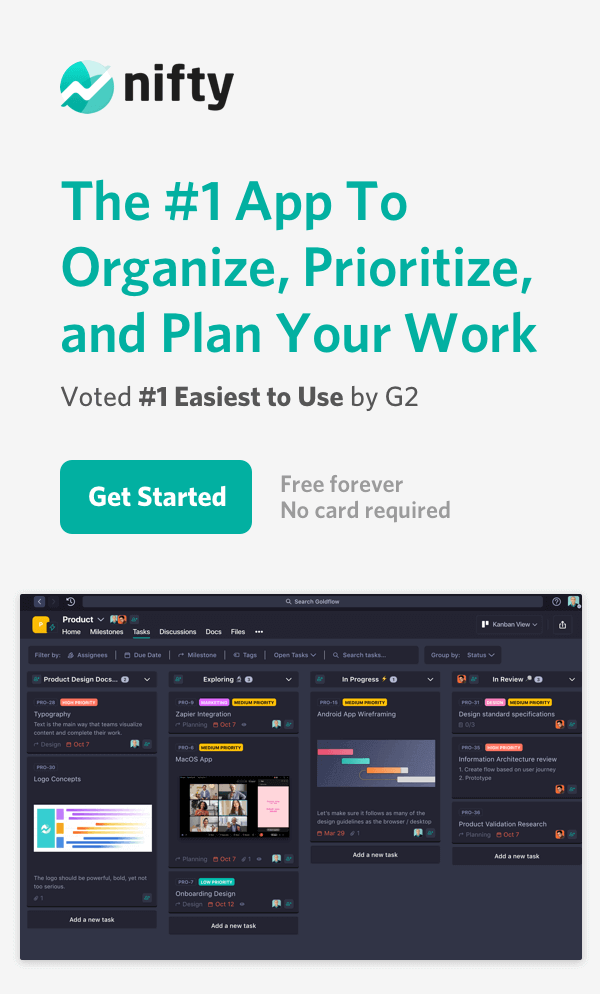Monday vs ClickUp: Which One Is Best for Project Management in 2025?

When it comes to project management tools, no list is complete without comparing – Monday vs ClickUp – two highly acclaimed workflow management tools in their own right.
However, with hybrid and remote work becoming the gold standard for organizations, choosing the right tool should not be a decision that’s taken lightly. After all, the right tool can save you a lot of time (and sweat) and get things done without delays or errors.
To make things easier for you, we will deep-dive into a comprehensive comparison between ClickUp vs Monday.com in this guide. Let’s get going.
Monday vs ClickUp: An Overview
Let’s start with the basics and get a bird’s eye view of Monday vs ClickUp.
What is ClickUp?

ClickUp is a fully customizable project management tool that empowers you to brainstorm smarter. Using this tool, you can:
- Streamline your work processes
- Maximize assets and resources
- Boost team collaboration as well as productivity
Plus, with weekly new updates, this dynamic platform gives you the best project manager-friendly features and a friction-free project management experience.
What is Monday.com?

Monday.com is another robust project management tool that ensures your teams work with greater flexibility, scalability, and ease. Instead of achieving business goals in a disjointed capacity, Monday.com empowers teams to build customized workflows and use a single source of truth.
Monday vs ClickUp: An In-Depth Comparison
Moving on, let’s explore how Monday.com and ClickUp stack up against a constellation of parameters:
1. Key Features: Monday vs ClickUp
Here’s a lowdown of the best features of ClickUp:
- ClickApps: This feature allows you to customize ClickUp for collaboration, organization, reporting, and work management with zero coding:
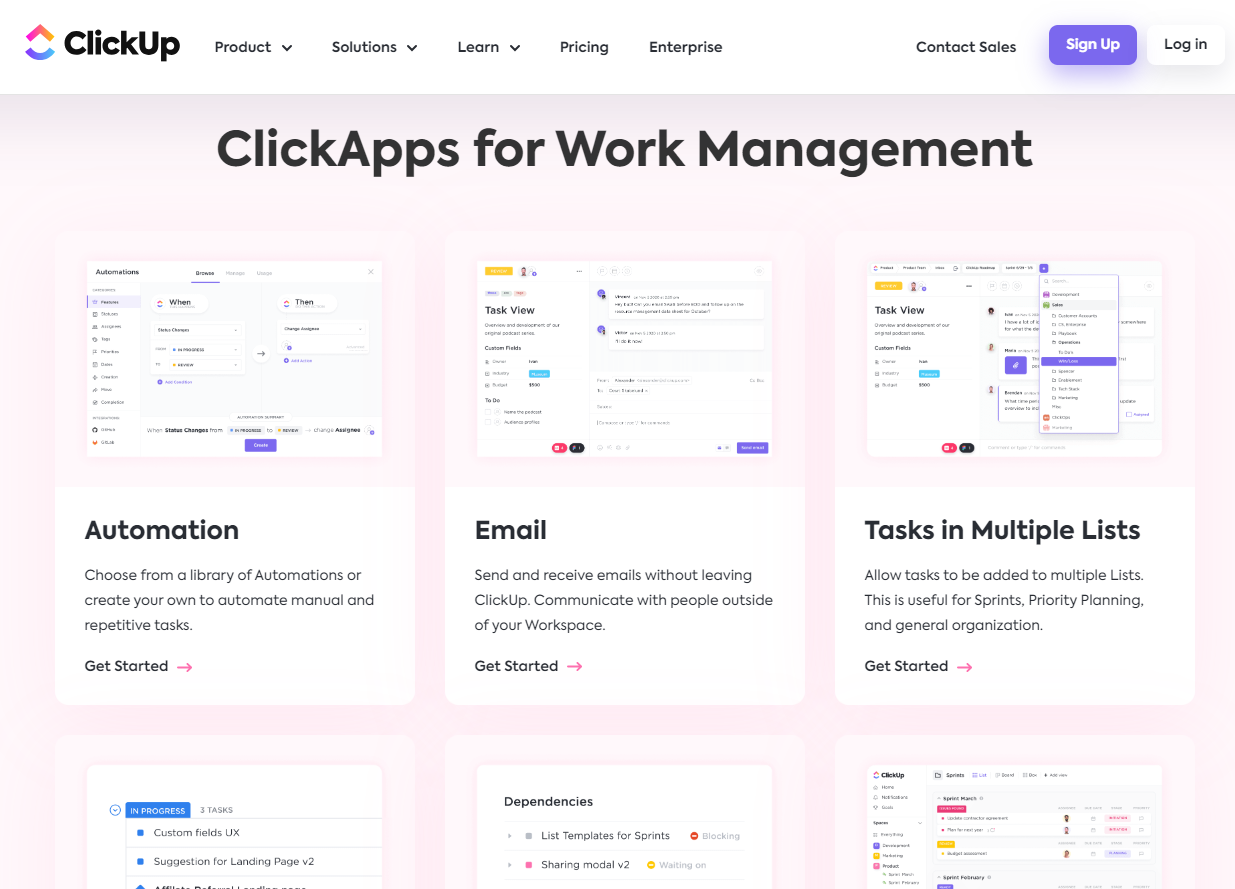
- Views: The tool offers 15+ fully customizable views for workflow visualization, project management, and task management, among others:
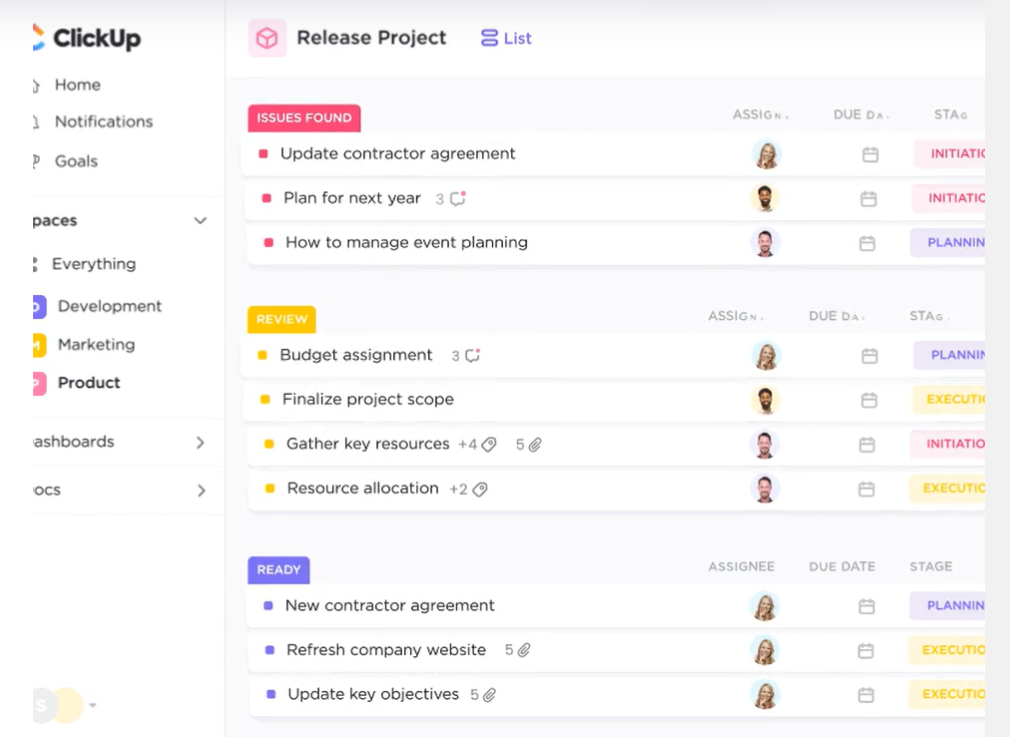
- ClickUp AI: ClickUp recently released a new feature, ClickUpAI. Think of it as your own AI-powered assistant that can be customized to your unique needs. What’s more, the tool comes with “hundreds of research-backed AI tools” for various roles and use-cases such as sales, marketing, customer support, etc., so that you can work smarter:

- Screen Recording: ClickUp allows you to record your screen and share it directly with ClickUp tasks. This ensures that the message’s context is not lost:

Next, let’s look at the best features of Monday.com:
- Board: Monday.com allows users to set up a different board for every project. This directly translates to specific workflows for varying schedules and tasks:
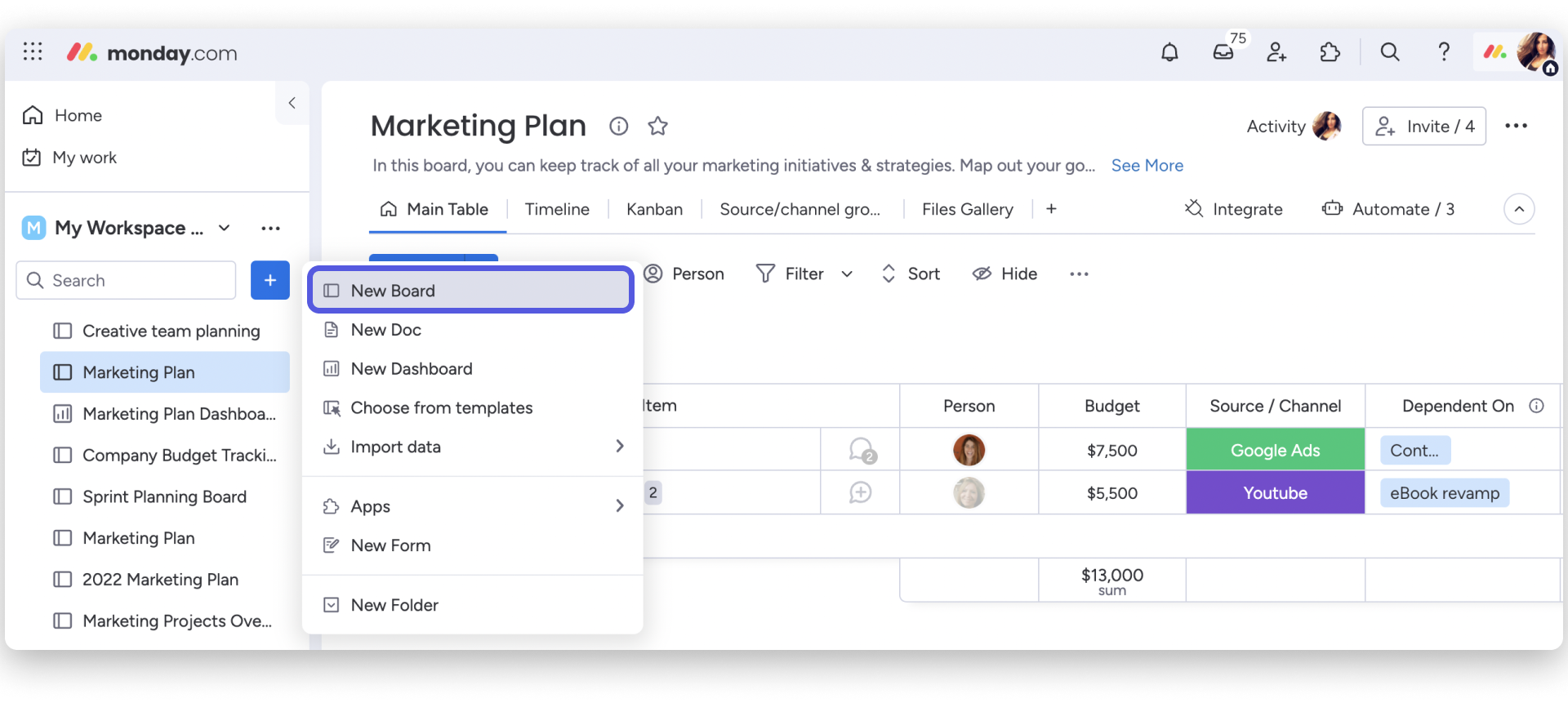
- Enterprise-wide use: Monday.com offers in-depth resources for all types of teams– from marketing and creative to R&D and sales. Users can build workflows from the ground up or use ready-made templates and optimize it as the project advances. This makes Monday.com a highly scalable and flexible software:

- Workdocs: Monday’s Workdocs feature lays the foundation for seamless collaboration. You can:
- Implement ideas and workflows from a centralized place
- Edit docs together in real-time
- Share comments on the fly
- Drag and drop text without disrupting the productivity
- Embed dashboards, videos, boards, etc., directly into workdocs:

- Code-free automation: Whether you want to build a full-fledged email campaign, assign tasks, track time, or get status updates, Monday automates all these repetitive tasks and gets you all the information you need in real-time:
2. Functionality: Monday vs ClickUp
ClickUp is known for its versatility, intuitive interface, and drag-and-drop capabilities. For example, you can view all your tasks from Home. Plus, different stakeholders can view the work from everyone’s perspective, ensuring everyone understands the task at hand.
That’s not all. ClickUp also offers an extensive Whiteboard feature that enables users to brainstorm ideas, visualize projects, and more. You can customize these boards by adding images, notes, text, etc.
Struggling to choose between Nifty vs Monday vs ClickUp?
Try Nifty Free
Due to the number of functionalities ClickUp offers, it can become overwhelming for a beginner.
Monday.com too offers great customization with respect to widgets, integrations, tools, and more. You can use pre-made templates and get started on a project within minutes.
One area where Monday.com trumps ClickUp is the prevalence of helpful support documents and an in-depth knowledge base:

So, whether you’re a beginner or a seasoned project management professional, Monday.com can be a great addition to boosting your productivity. Plus, its low-code/no-code functionalities make it an easy tool to use.
3. Kanban Boards & Gantt Charts: Monday vs ClickUp

With ClickUp, you can display your tasks in multiple ways, such as Kanban, Gantt Charts, Tabular, Sprints, and so on. You can choose from over 15+ views.
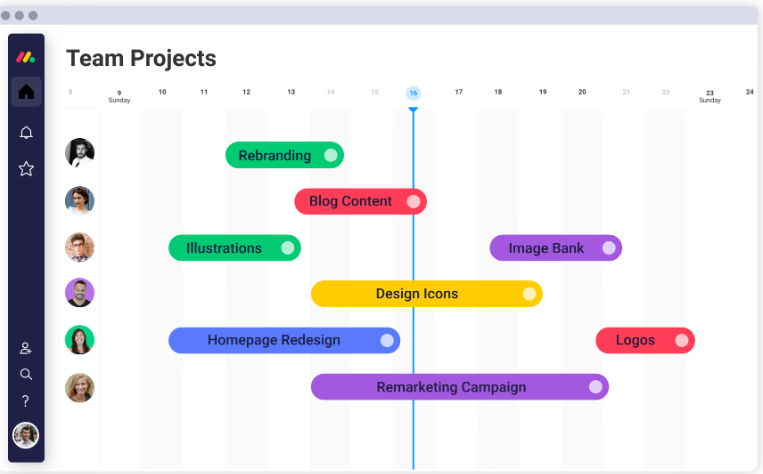
Monday.com, too, offers Gantt Charts and Kanban views but in a more generalized sense as compared to ClickUp’s features.
4. Team Size: ClickUp vs Monday.com
ClickUp is not as comprehensive as Monday.com in terms of feature-set. However, it offers flexible lists with customizable fields. ClickUp is better suited for solo or smaller companies with straightforward project requirements.
Monday.com is a ‘complete’ platform that enables users to:
- Communicate collaboratively from multiple devices
- Automate project workflows
- Parameterize key actions without manual help
These features make Monday.com a better fit for larger teams with more complex project needs.
5. Integration: ClickUp vs Monday

They say a project management tool is only as good as the integrations it provides–and fairly so. This is where ClickUp wins over Monday.com hands-down, as it offers over 1000+ integrations with other popular tools (read: Asana, Trello, Excel, JIRA, etc.).

In contrast, Monday.com offers 200+ integrations that are centered around boosting collaboration and productivity. These include integrations with Salesforce, Mailchimp, GitHub, Shopify, Jira, HubSpot, and more.
The best part is that the integrations are categorized under useful segments such as collaboration, communication, marketing, and more, which makes finding the right tool easier:
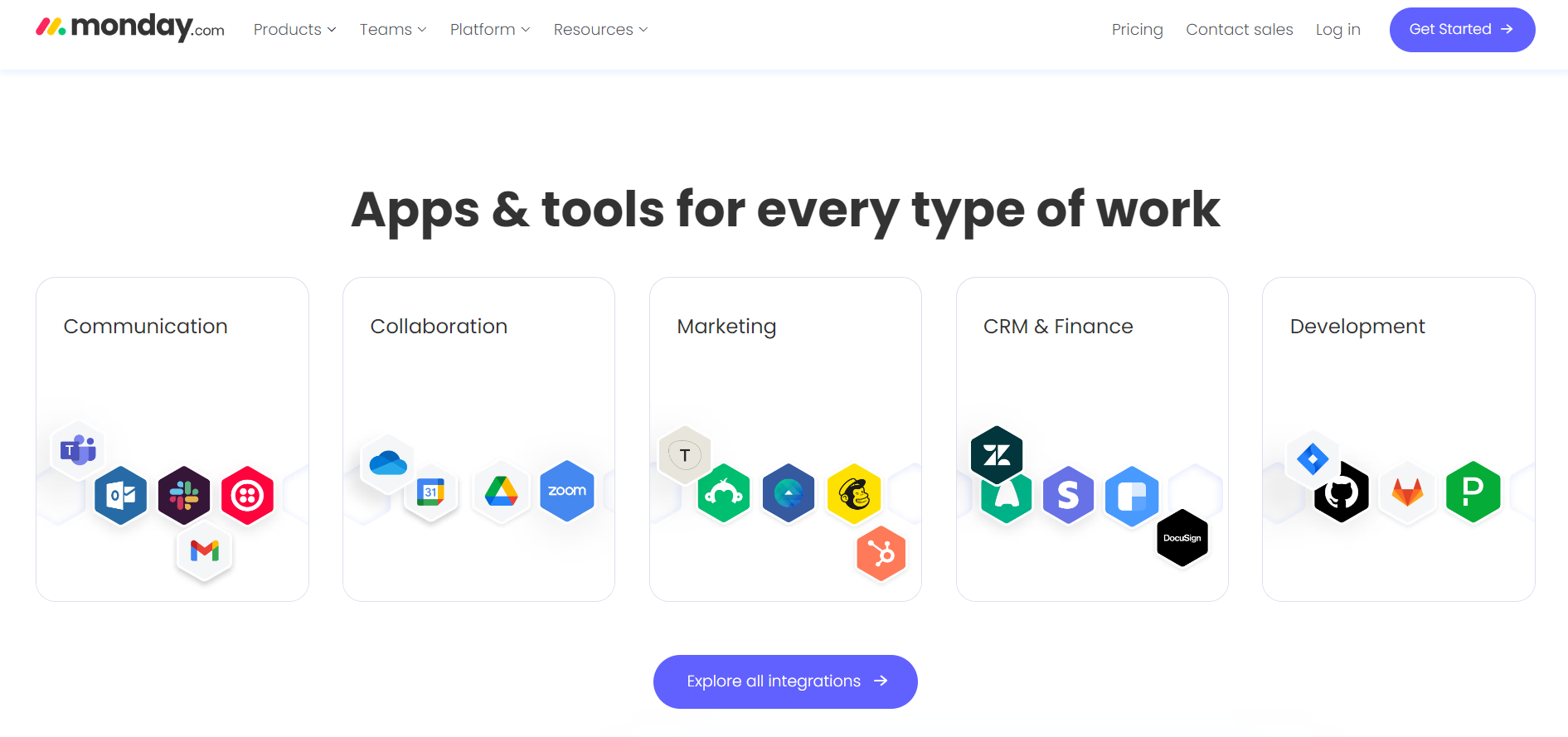
6. Pricing: ClickUp vs Monday.com
ClickUp’s Pricing Model: It offers four pricing plans:
- Free Forever Plan
- Unlimited Plan: Starts at $7 per user per month
- Business Plan: Starts at $12 per user per month
- Enterprise Plan: Custom pricing; available on request
ClickUp offers the option to sign up for free, with no credit card needed.
Get all ClickUp features at half its price!
Use Nifty
Monday.com’s Pricing Model:

- Free: Up to two seats
- Basic: $8 per seat per month
- Standard: $10 per seat per month
- Pro: $16 per seat per month
- Enterprise: Custom pricing; available on request
Monday.com too offers the option to sign up for free, with no credit card required.
In short, ClickUp’s pricing is more cost-effective than Monday.com. That said, enquire about the feature stack and opt for a tool that fits your business needs.
Pros and Cons of ClickUp vs Monday
Moving on, let’s understand the pros and cons of Monday.com and ClickUp.
Pros and Cons: ClickUp
| Pros | Cons |
|
|
|
|
|
|
|
|
Pros and Cons: Monday.com
| Pros | Cons |
|
|
|
|
|
|
|
|
Both ClickUp and Monday.com come with their own set of strengths and weaknesses. The best tool for you will depend on the specific use cases you require to boost productivity and organizational growth.
ClickUp vs Monday vs Nifty: The Right Choice
While both Monday and ClickUp have great user reviews, there’s another project management tool that’s even better for managing deadlines, assigning tasks, monitoring pipelines, and more: Nifty.
Think of Nifty as having the perfect balance between the functionalities and features that Monday and ClickUp offer:
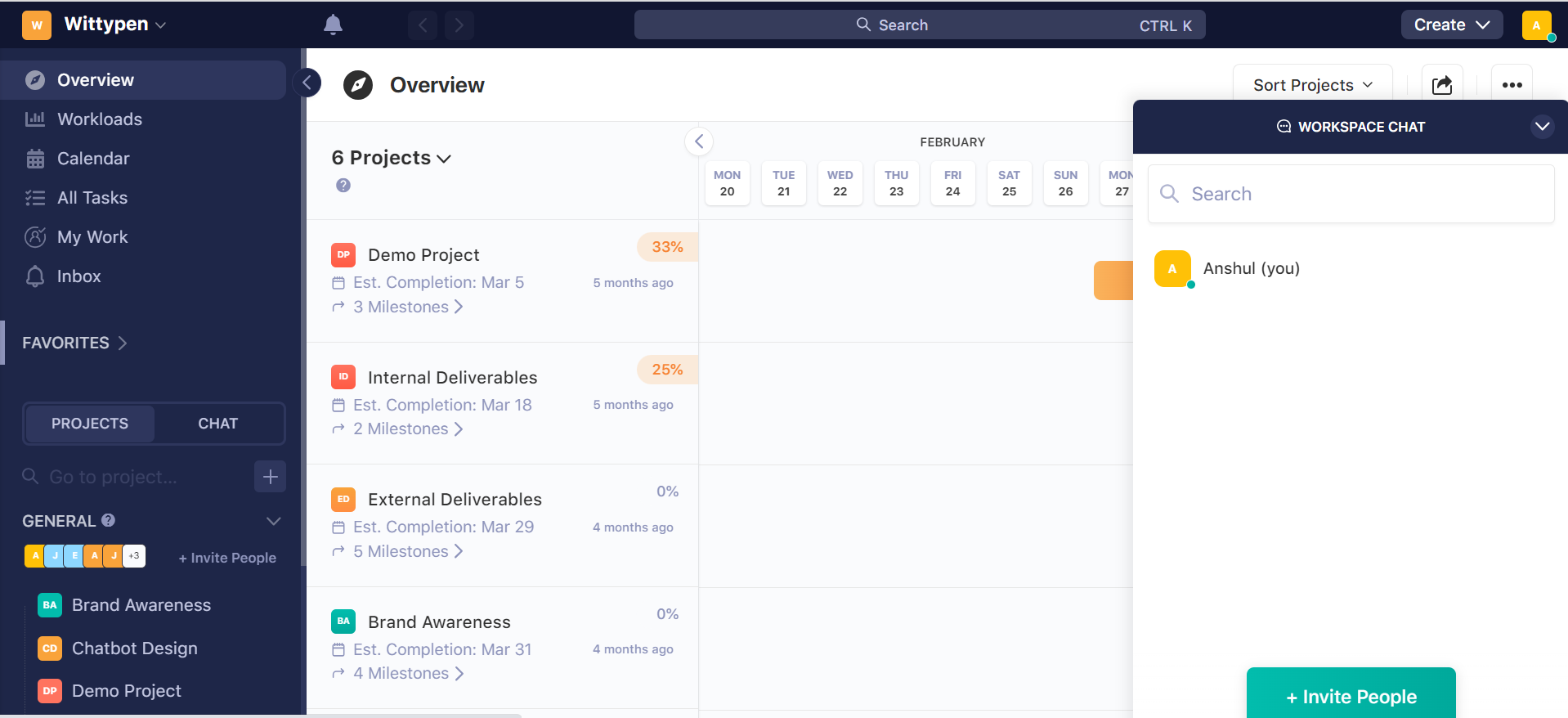
Nifty promises an all-in-one workflow experience that has benefits for teams across the board–from marketing and product to customer service and even engineering. Here’s what makes Nifty a better alternative than Monday and ClickUp:
- Milestone coverage in depth: You get more granular control when managing milestone and dependency-based tasks as compared to Monday.com:
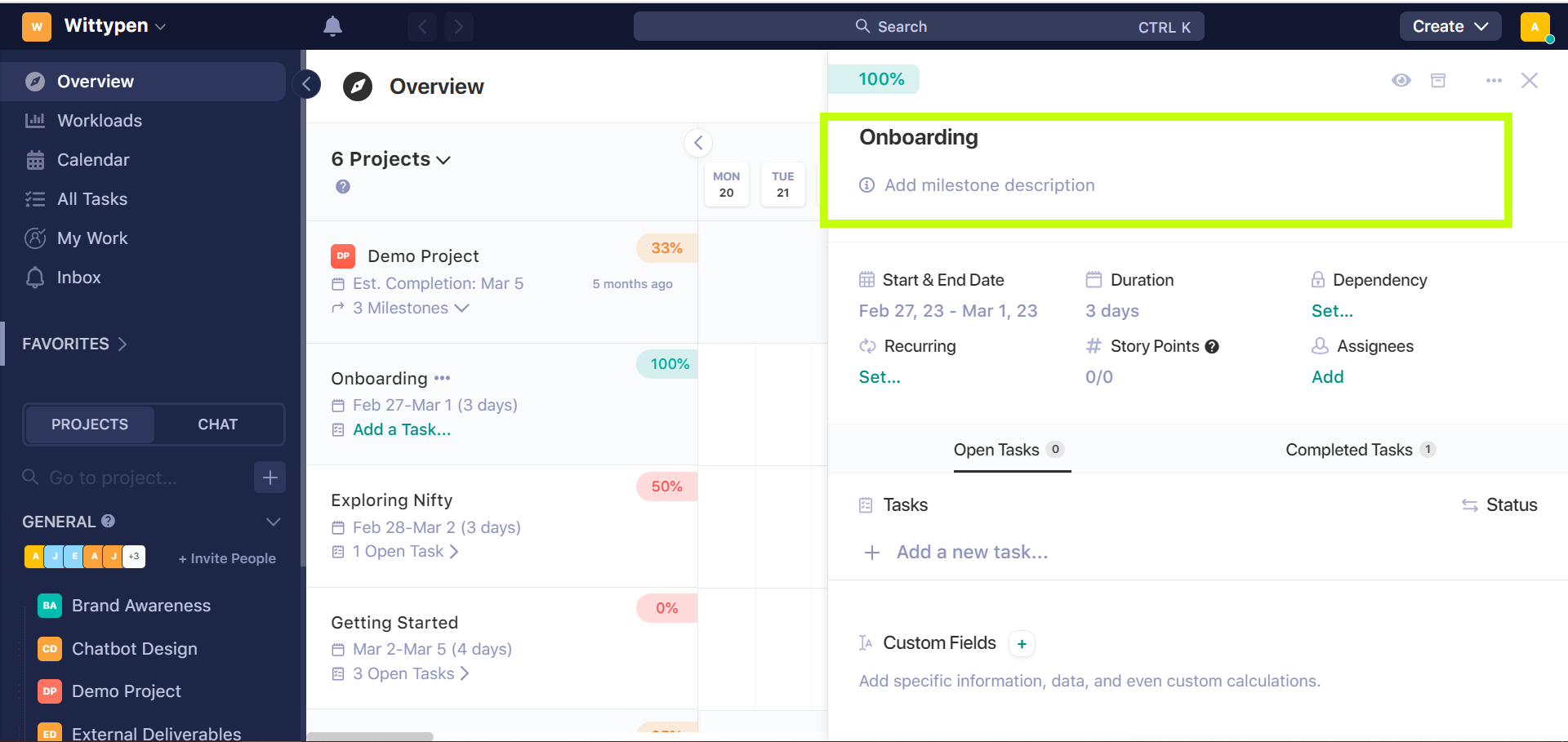
You can add a milestone description. You can set dependencies and assign milestones to specific team members. Plus, you get to view the start and end dates for milestones.
- Chat for direct: Nifty provides a Chat feature that is optional to use. You can jot down your ideas, notes, etc., and stay on top of your deliverables:
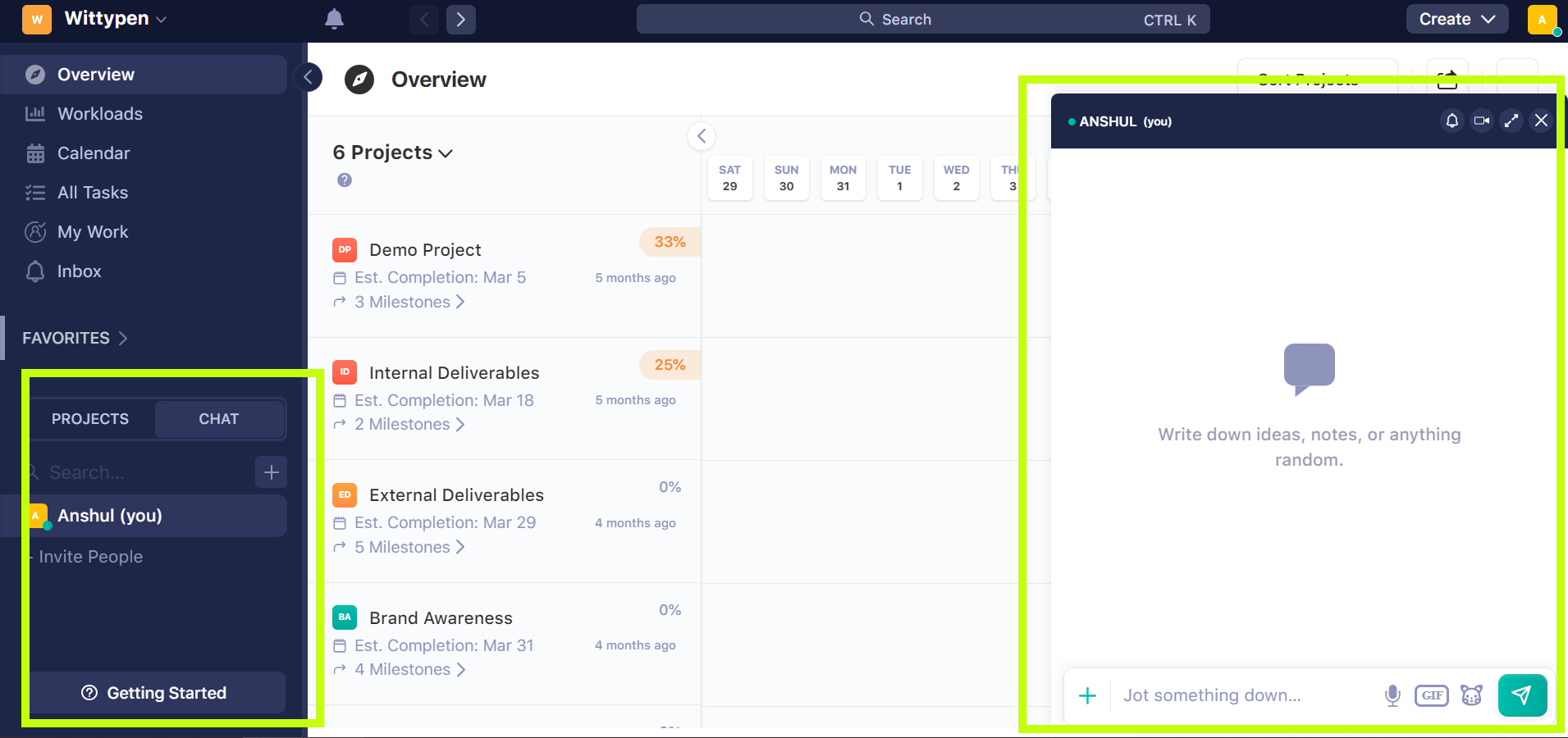
You can also invite people and collaborate at the click of a button.
- Automation at its best: Another fundamental area where Nifty shines is simplifying workflows by automating core tasks such as calendar reminders and invites, files stores, zoom-calling, note-taking, and time-tracking:

- Mobile app: Nifty’s mobile app mirrors its website user experience to the T. This allows for a more contextual and cohesive project management experience. Plus, your team members can manage tasks, track project progress, and collaborate on the go:
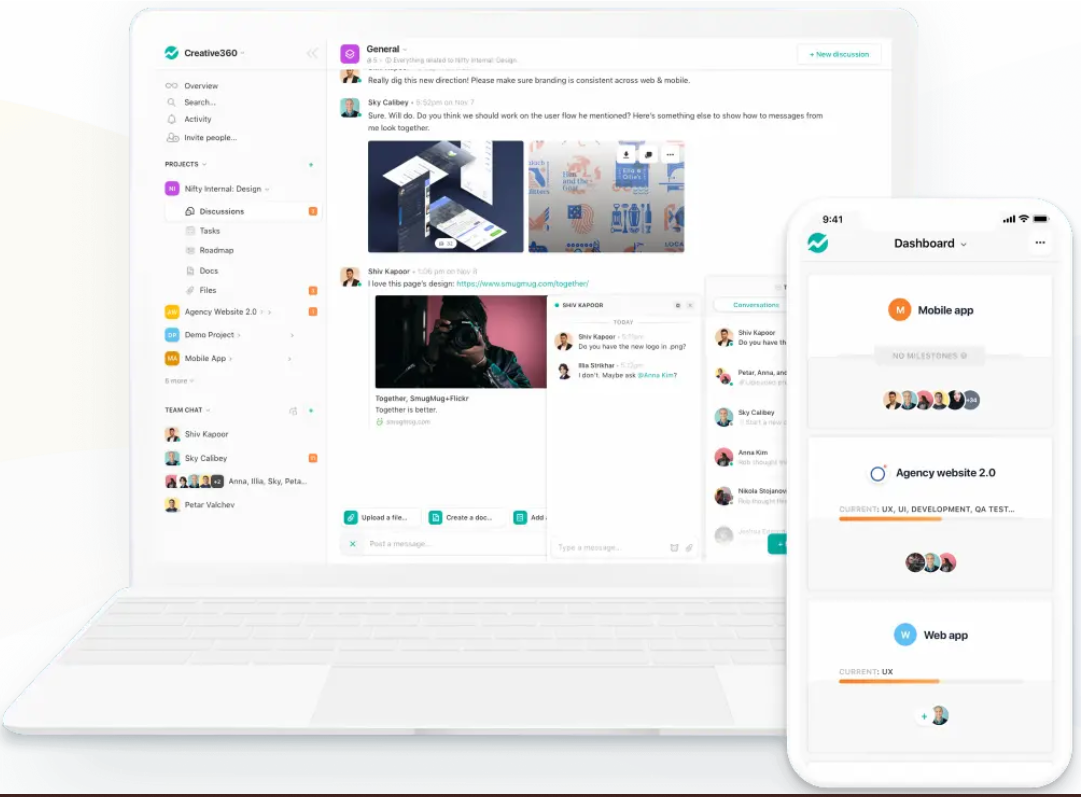
Nifty also offers a 14-day free trial. So sign up and see how this tool can advance your business goals and supercharge productivity with little to no effort. Long story short, Nifty combines the power of communication, collaboration, and project management–all in one tool.
One final piece of advice: When selecting software, think about the following parameters –
- What kind of workflow experience does your team need?
- What kind of end use-cases and business goals are you looking to achieve?
- What do your basic usability and advanced technical requirements look like?
- How will you get stakeholder buy-in?
Remember that you should go for a tool that is easy to use in addition to being feature-focused. And, of course, the tool must be able to ‘evolve’ as your organization grows and adapt to your needs (not vice-versa). Keep these points in mind and make an informed decision that can revolutionize the way you work and succeed at projects. Good luck!
FAQs
What is the difference between ClickUp and Monday?
ClickUp and Monday are both popular productivity and project management platforms. However, ClickUp is known for its versatility and comes power-packed with a wide range of features (think: task management, time tracking, and goal setting).
In contrast, Monday emphasizes simplicity and visual project tracking. Naturally, this makes it better suited for teams that want an intuitive project management experience. It’s worth noting that both tools vary in the way users ‘experience’ the project management software.
Which tool is better than Monday.com?
Nifty offers a more intuitive user interface and a robust set of project management tools. Its strength lies in helping teams collaborate and manage tasks more efficiently.
Additionally, Nifty provides integrated communication features, including in-app chat and video conferencing. With its seamless integration of project timelines, tasks, and files, Nifty offers a more comprehensive project management solution as compared to Monday.com.
Is Monday a project manager or CRM?
Monday is primarily a project management platform that helps teams plan, track, and collaborate on various projects. It does offer CRM-like capabilities, but its primary focus remains on project and task management.





